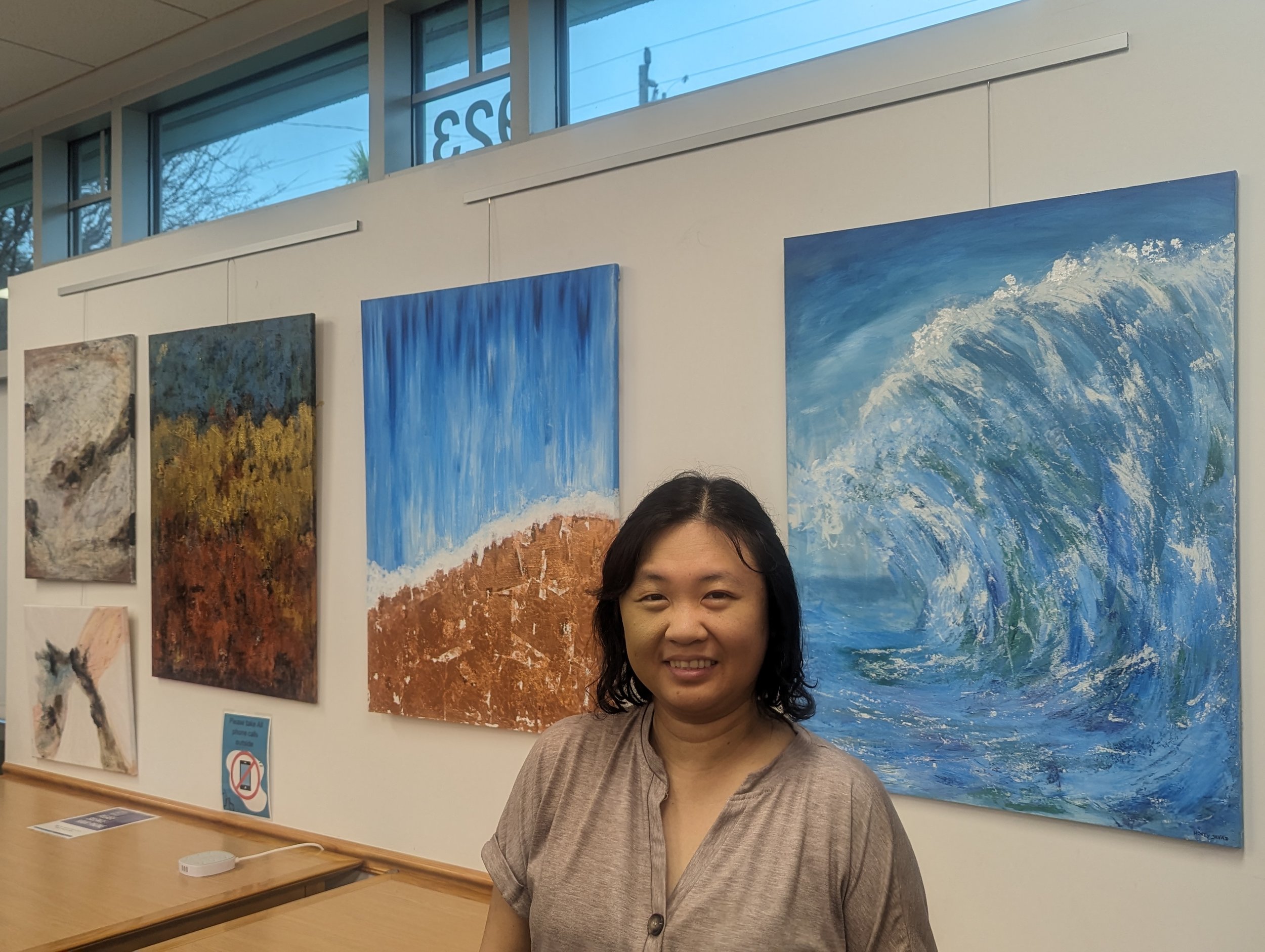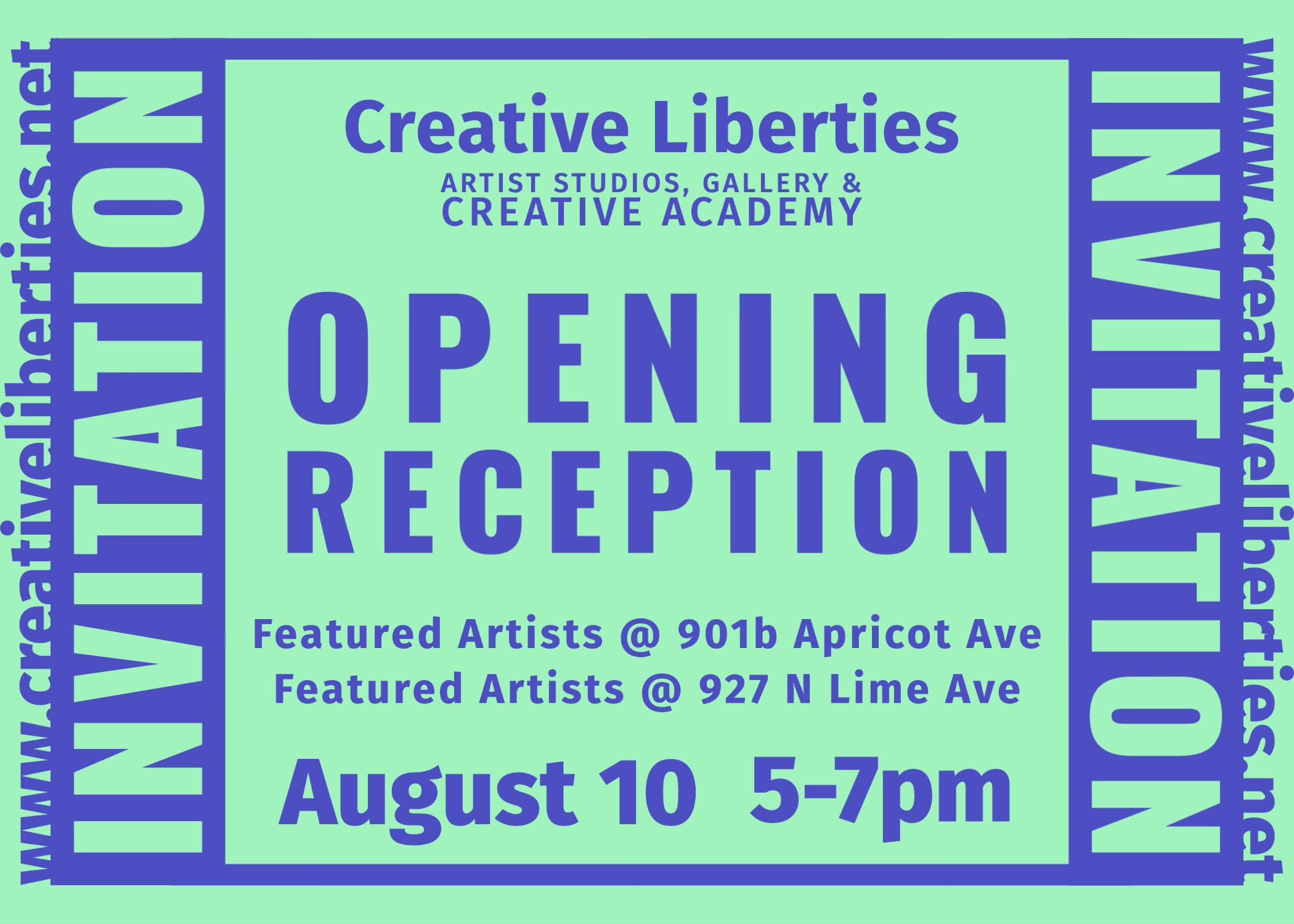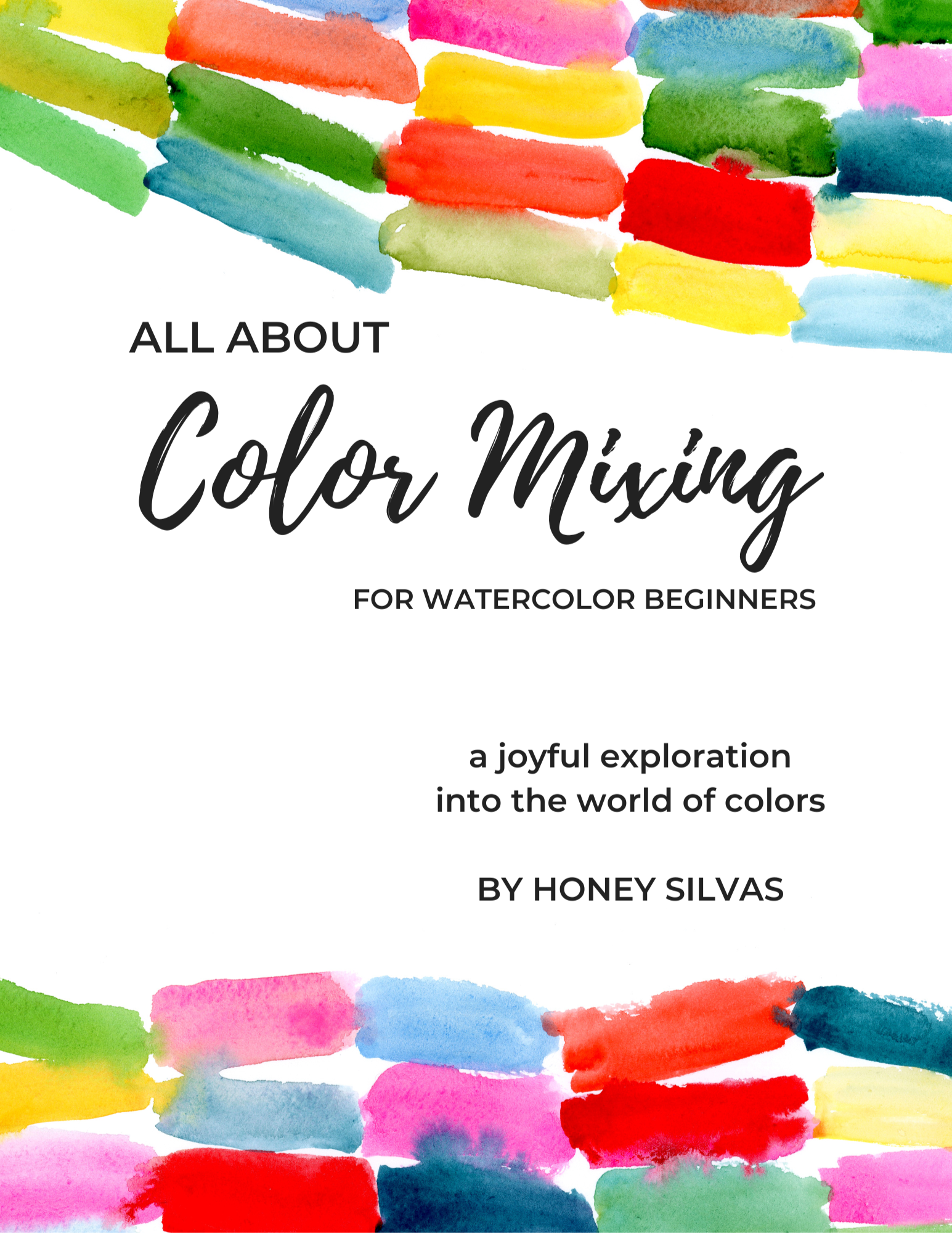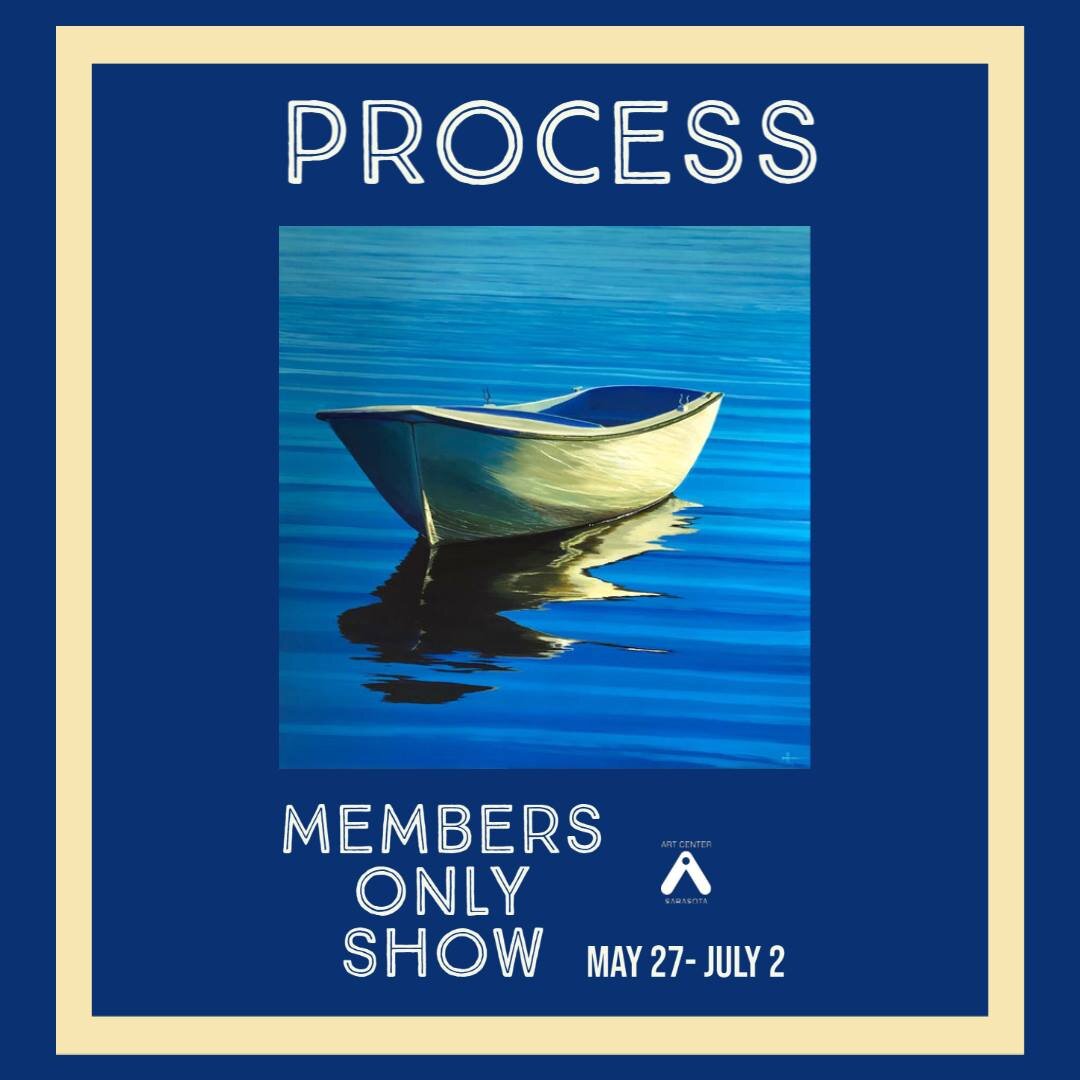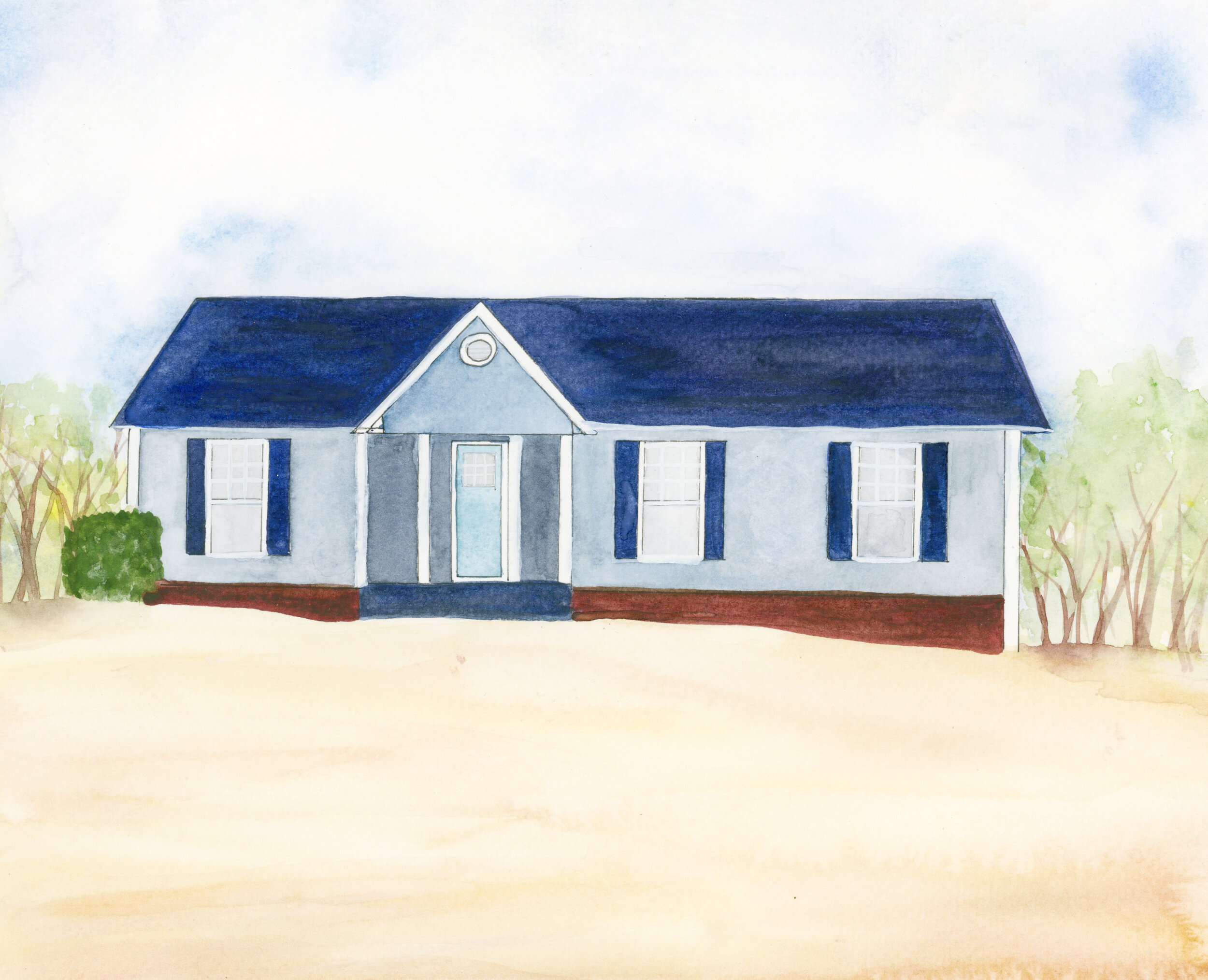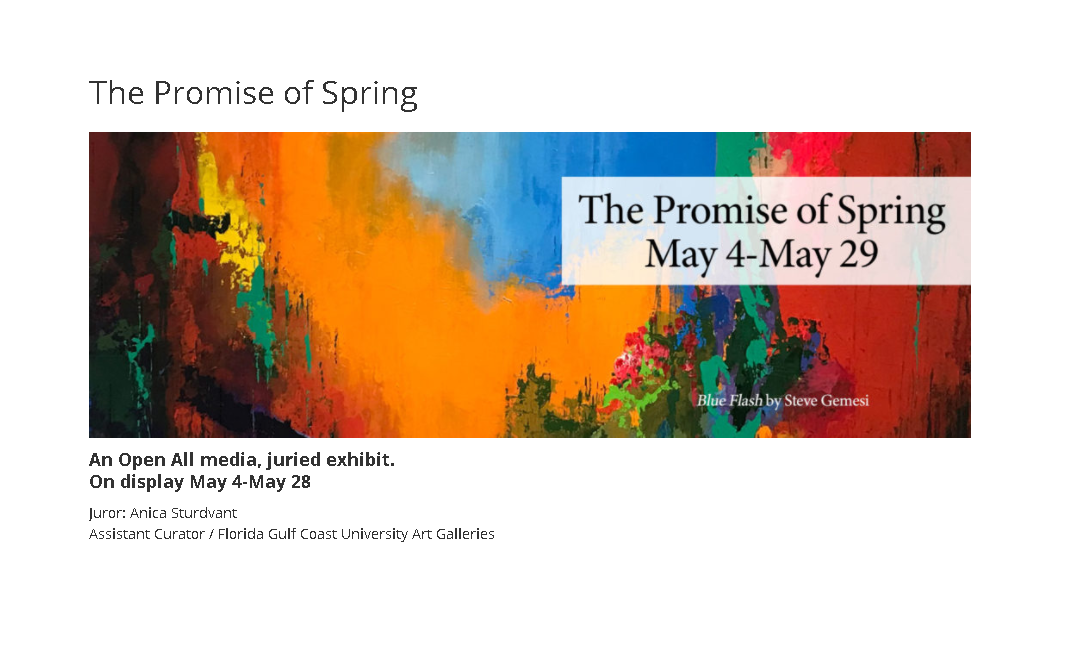All About Watercolor Brushes for Beginners - What to Buy and How to Use
TRANSCRIPTION:
In this video, we're going to talk all about watercolor brushes! If you're a watercolor beginner and you don't know which brushes to get, I'll explain everything there is to know about brushes. Let's get started!
So the first thing you need to know is that you do really need to get a watercolor-specific brush. You can't just get an oil brush or an acrylic brush, it has to be for watercolor. Also if you have a watercolor set for kids and it comes with a brush, those brushes are not going to give you good results either so you need to invest in a proper watercolor brush.
If you just have the budget for one brush and you're just starting out, I recommend starting with a round brush that's a size six. This is the Princeton Heritage 4050 round six. This is all the brush that you need. You can make medium-sized strokes with it. It goes to a point so you can also do fine lines with it if you just do the just the tip of it.
If you have the budget for a second brush I recommend a round two, which is exactly the same type of brush as the other brush except it's just smaller. This brush will let you do these fine lines like these much easier because you can control it easier and you can even go finer now.
If you have the budget for a third brush, I recommend a larger brush like this round 12. So as you can see because it's a bigger brush it absorbed a lot more paint and a lot more water. If you're just starting out you just need three brushes: a large brush for large strokes like the round 12; a medium brush like the round six for medium strokes; and a small brush like the round two for small strokes.
The other brush that I recommend getting is a mottler brush like this. This is a one and a half inch sized mottler brush from the Princeton Elite line and it's great for doing large washes. So if you're trying to do a large area really quickly, then you can do it easily with this.
So that's the short version of it. These are the four brushes that I recommendif you're just starting out and I use these brushes maybe 90% of the time. And if you don't do a lot of landscapes you don't even need this but it's helpful if you do landscapes and washes and stuff like that.
These brushes are not that expensive they're synthetic sable so they're not made from real sable but they perform comparatively or even better than real sable. And the brushes last a long time. I've had these brushes from the beginning and I haven't had to replace them. They last years if taken care of, just make sure you don't use it for other media like oil or acrylic and don't use it for masking fluid because that will ruin your brush. For example, here's a brush that I use for acrylic and acrylic is really rough on brushes. I don't think I cleaned this really well but they kind of just get ruined but this is my acrylic-specific brush but you don't want to do that to your watercolor brushes. So this is the Princeton Select which I use for acrylic but I don't mix my acrylic and my watercolor brushes.
And then for masking fluid, you just want to use an old brush or like a cheap brush for that because that will also ruin your brush.
For watercolor you want to get a watercolor-specific brush and there are two main types of watercolor brushes. One is the sable or synthetic sable kind and the other is a squirrel or synthetic squirrel kind. So these are two different kinds of brushes in terms of how they feel and how they hold water. So synthetic sable means it's not real sable so it's not made from an animal but sable does come from an animal.
From my observation, depending on the style that the artist likes they either prefer one type of brush to the other as their main brush. I personally like the synthetic sable kind of brushes the most. I find the squirrel brushes are maybe too soft and maybe not as snappy, but I see a lot of people using these as well. This particular brush is a round eight by Silver Black Velvet. I don't like it as much as I like the Princeton Heritage one and the main difference is in how the brush holds water and how snappy it is. Princeton also has a line of squirrel brushes called Neptune so if you hear either Neptune or Silver Black Velvet those are usually synthetic squirrel brushes. To be honest, I don't know a whole lot about synthetic squirrel brushes, I don't use them a whole lot I think that for the style that I do which is loose modern style I find the synthetic sables work best for me.
So as far as size, when I was just starting out I thought because I had a round 12, a round 6, and a round two, I thought I needed to get all the in-between sizes like the size four and the size 8 and a size 10.
But to be honest, if you already have these and you want to add more brushes to your collection, I recommend going either really small or really large because anything in between will be covered by these brushes already. So you want to be able to make either tinier strokes or really large strokes. If you want to get a tiny brush, I recommend the Princeton Heritage 3/0. Then if you want to get a larger brush, you can get a round 16 or a round 24 which is gigantic.
When I was just starting out, I got a sable brush because that's what a lot of the older books recommend. In my opinion, that is outdated advice I don't really find an advantage to using these. These are really expensive for one and they are made from animals so it's not cruelty free. And because the technology has progressed farther, synthetic sable brushes actually perform better because they're able to improve upon the brushes itself. That's why I don't recommend real sable brushes but I recommend synthetic sable brushes instead.
Those are my top recommendations for brushes. Hopefully that helped you out a lot. Thank you so much for watching. Don't forget to subscribe to my channel for more videos like this.
Subscribe to my channel for more beginner watercolor tutorials!
Watch this video on my recommended watercolor supplies.
My recommended brushes for watercolor beginners
* Princeton Heritage, Series 4050, Synthetic Sable Paint Brush for Watercolor, Round 2 - for small strokes
* Princeton Heritage, Series 4050, Synthetic Sable Paint Brush for Watercolor, Round 6 - for medium strokes
* Princeton Heritage, Series 4050, Synthetic Sable Paint Brush for Watercolor, Round, 12 - for large strokes
* Or get all three as a set with an additional smaller angular wash brush
* Princeton Aqua Elite, Series 4850, Synthetic Kolinsky Watercolor Paint Brush, Mottler, 1-1/2 Inch - (optional, if you paint landscapes) for washes
If you prefer synthetic squirrel over synthetic sable:
* Silver Brush Limited 3000S8 Black Velvet Round Brush for Watercolor, Size 8, Short Handle
* Princeton Artist Brush Neptune, Brushes for Watercolor Series 4750, Synthetic Squirrel, Round 6 or Round 12
If you paint with acrylic, I recommend using separate brushes for acrylic so you don't ruin your watercolor brushes.
* Princeton Select Artiste Fine Art Multi-Technique Brush Set, Synthetic Brushes - for acrylic
If you use masking fluid, use a separate (old or cheaper) brush or use silicon brushes or a ruling pen so you don't ruin your watercolor brushes.
* Silicon Brushes for Painting Masking Fluid Clay Molding
* Ruling Pen for Masking Fluid, Perfect for Fine Line Drawing, Technical Drawing, Cartography and Calligraphy, Suitable for Use with Masking Fluid, Drawing Ink, Indian Ink and Gouache
I mostly recommend the round watercolor brushes because I use those most of the time. If you want me to feature other brush shapes, let me know in the comments and maybe I will do a future video.

